The diary says “Killed in Action”. John ended his days in the French soil during the battle between Regina Trench and Desire Trench in November 1916. Who was John?

John Larsson was born in Mönsterås parish i Kalmar county in Sweden as Johan Gustaf Larsson on July 2nd, 1878. In this case it is a bit unusual that he actually keeps his Swedish spelling of the surname with two “s” as it is more common in the most cases when it comes to spelling of Swedish names in the documents, connected to their time in the the armies in their new countries, that they change it to just one “s” in the Scandinavian “son-surnnames”
He was raised by his mother Hedda Christina Johansdotter, but without a known father, and is noted as “oäkta” in the Swedish churchbooks, which means directly translated “illegitimate”, which was not seen with good eyes in those times, but was fairly common. They lived on the farm Blackemåla, south of the village of Ålem in Kalmar county.
When reading the documents from the Swedish Church books I see that he grew up together with his mother during the years before he emigrated, but sometimes also together with his mother’s new husbands and also with his mother’s parents. In one case one of Heddas new husbands, Gustaf Edvin Johansson is declared “insane” and is put on a mental hospital, and Hedda is declared pauper. It must have been a hard time for the family.
John is early noted as a sailor and it is beleived that he belonged to Oskarshamn’s shipping house from around 1894 until he emigrated to North America in 1898, at an age of 19, and he did not start nor fulfilled his military conscript in Sweden.


According to the 1916 Canada census of Manitoba, Saskatchewan and Alberta, John created his little family together with his Swedish wife Constance that he probably met when he had emigrated to North America. They had two sons and two daughters, who were Ethel 10, Arvid 8, Clarence 7 and Jeanette 5, all born in Alberta.
The Larsson family lived in Lethbridge, Alberta, and in my research I find other Swedish born soldiers who lived there before they went out to war. I don’t have any information right now if they knew about eachother, but probably they had som kind of knowledge about other Swedish citizens in Lethbridge. Those I have in my research are from different parts of Sweden.
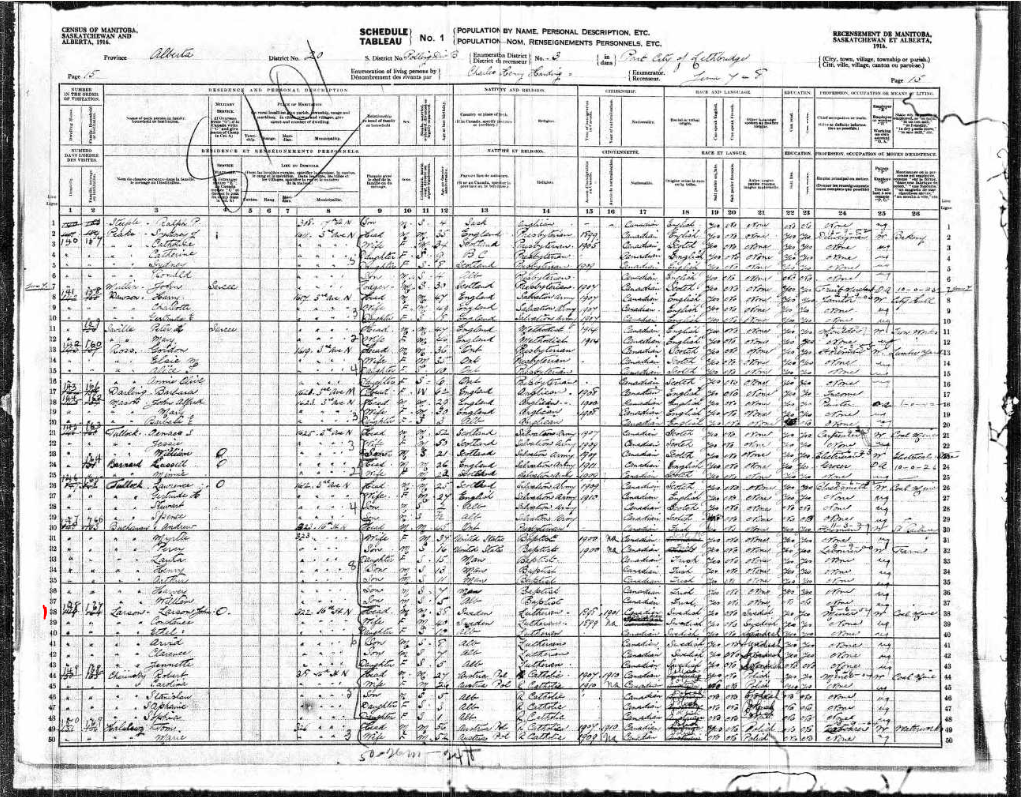
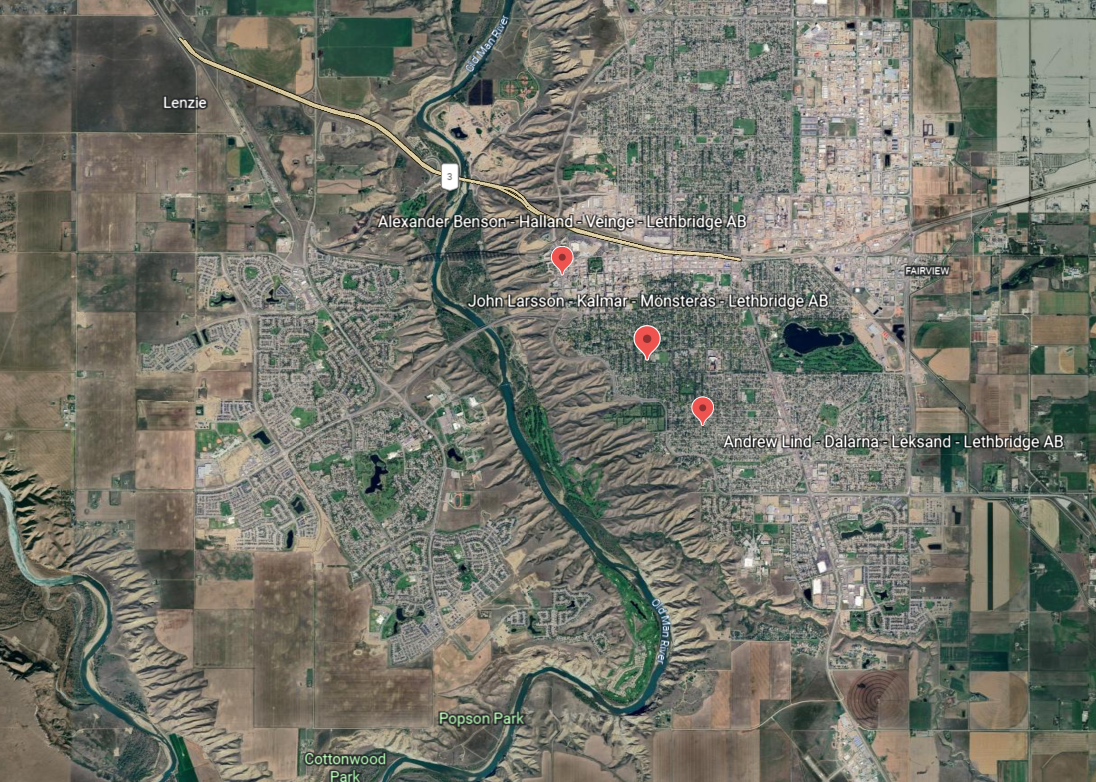
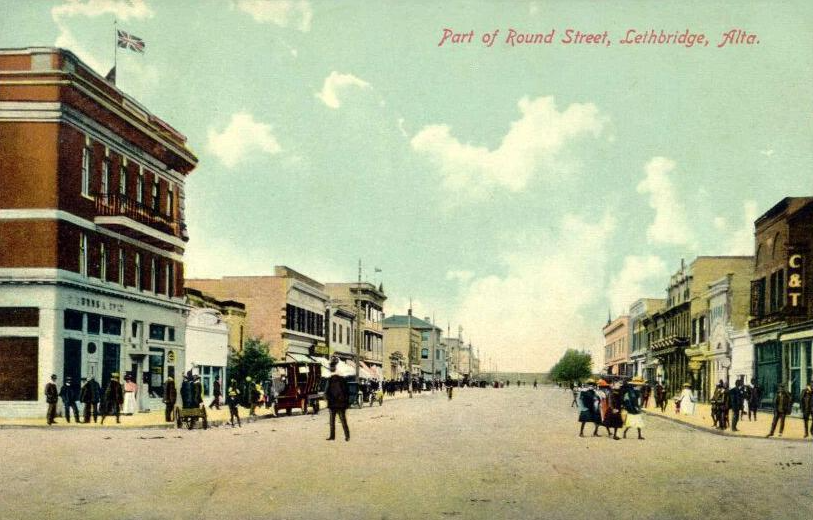
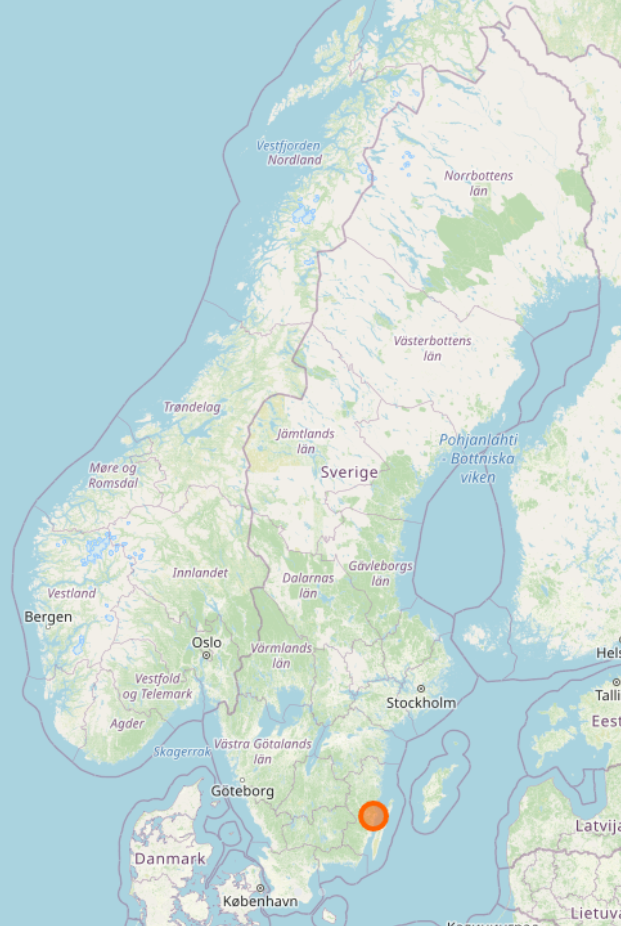
John’s unit, the 39th Field Artillery Battery, which belonged to the 10th brigade, 3rd Divisional Artillery, left Saint John, Canada, in February 1916. John enlisted in Lethbridge and went overseas from Saint John in February 26, 1916 and arrived to Plymouth, England March 13, 1916. He landed in Le Havre in July 14, 1916.
According to the unit diary the unit supported the attacks towards Desire Trench from Regina Trench in the area north-west of the village of Courcelette during the battle of Ancre Heights. John is noted to be killed November 16, 1916, most likely in his support position, a bit behind the area mentioned above.
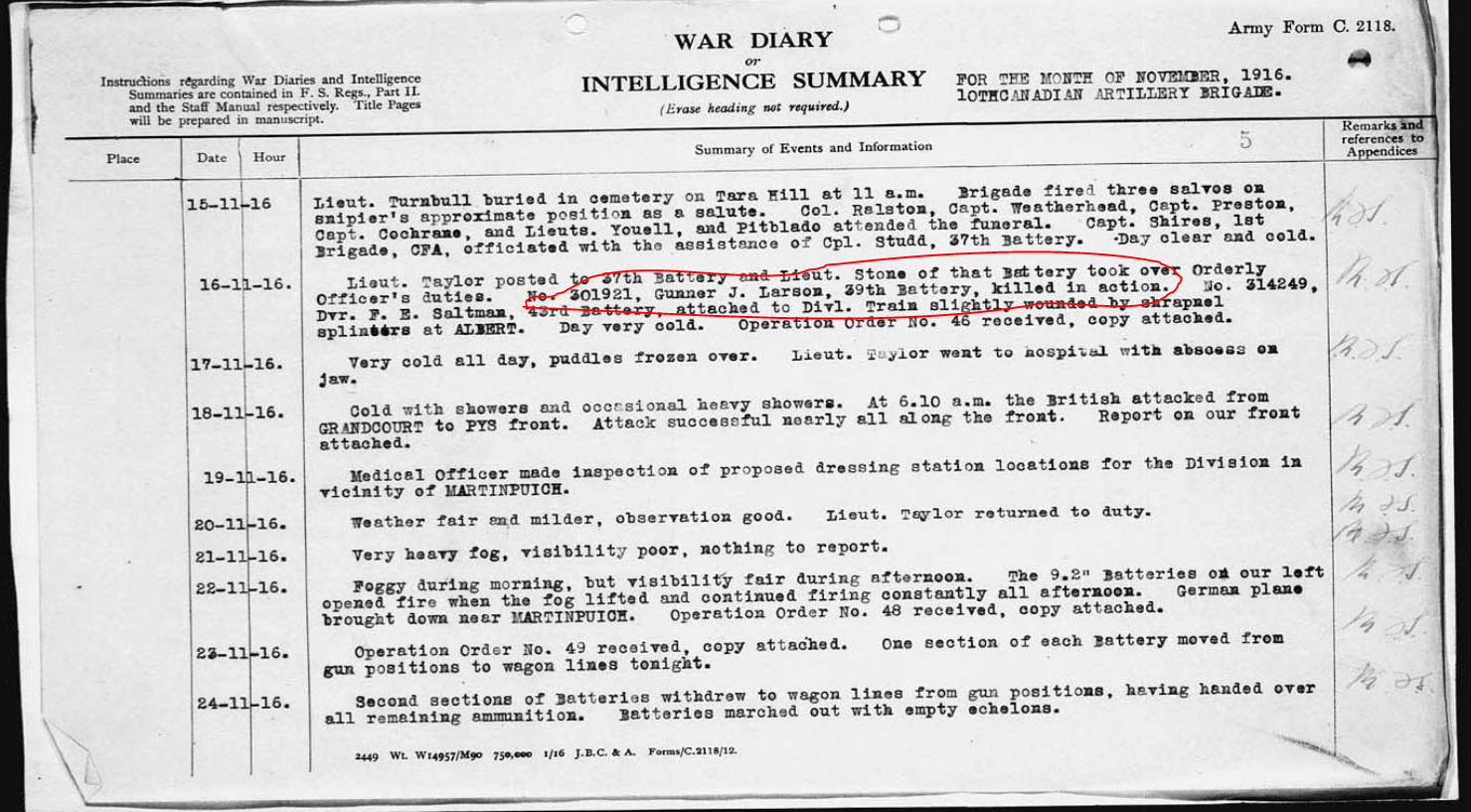

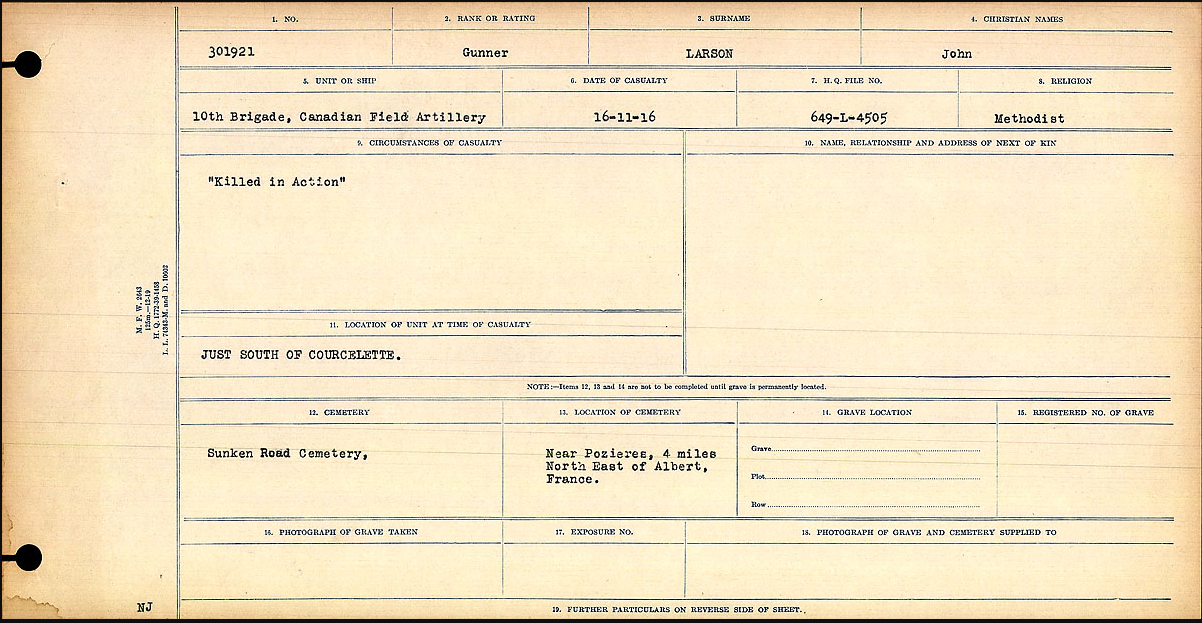
During my trip to the Somme area of the battlefield in France in July 2022 I visited the area where John was killed in action and where he is buried. Johan is buried at the Sunken Road Cemetery, which is located south of the village of Pozieres, south-west of Courcelette. It always feels good to find the headstones of the Swedes when I visit the cemeteries, and I always plant a little Swedish flag (made of paper and wood) to commemorate their Swedish origin.
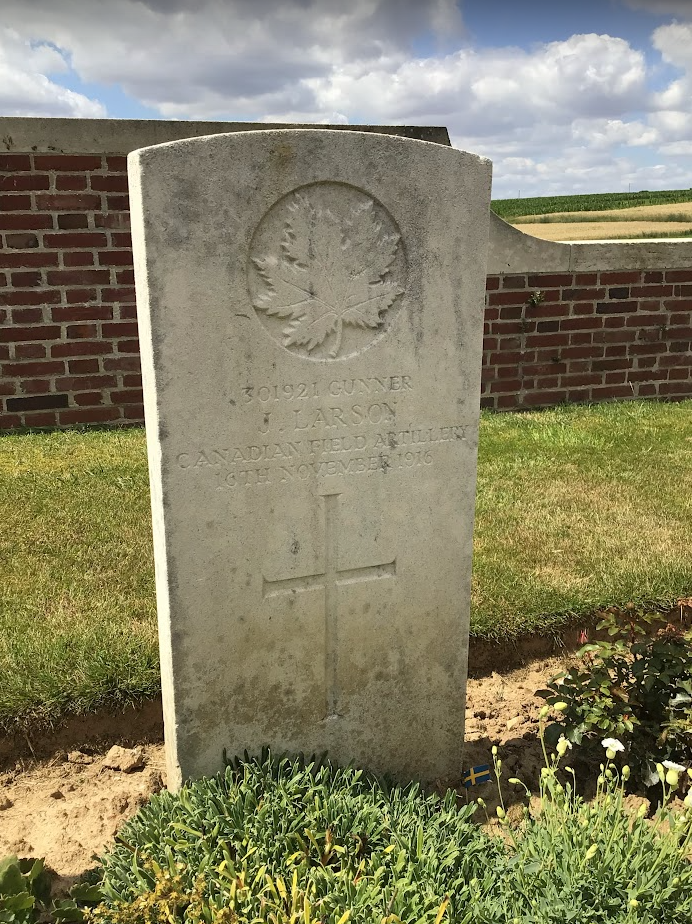
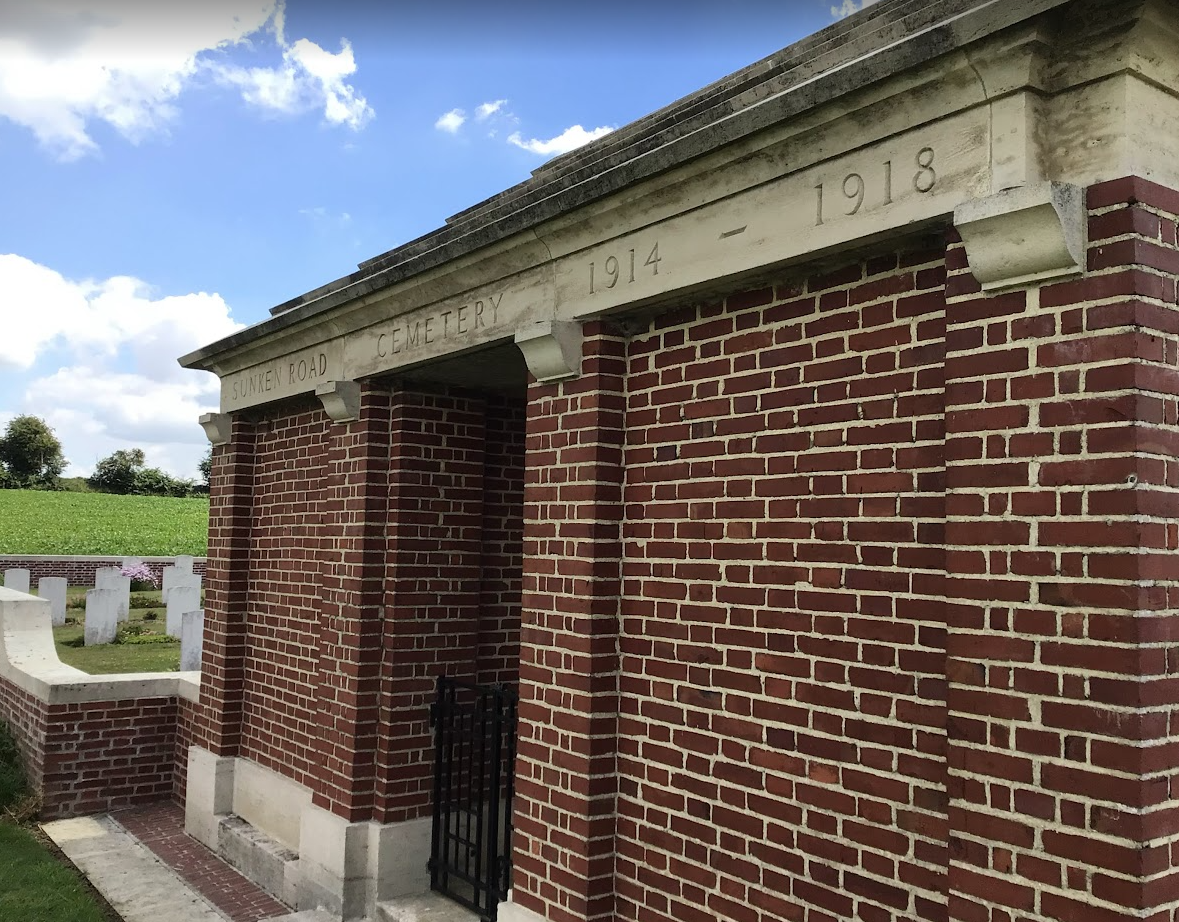

May John rest in peace.
This was the first short story from my visit to the battlefields in July 2022. More stories will be told, about other Swedes who I visited during this trip, who fought and fell at the Western Front in the Great War.
